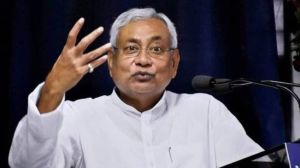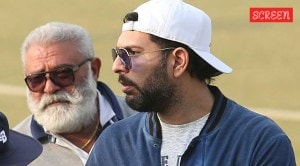Bombay Blues
A pitch-perfect account of the flowering of jazz in Bombay
Taj Mahal Foxtrot is a romp from beginning to end,celebrating a music,a city,freedom and the power of storytelling. Naresh Fernandess book chronicles,as its subtitle claims,the story of Bombays jazz age.
Buddy Bolden and his fellow musicians,credited as being the pioneers who shaped a musical form from the chants,hollers and working songs of the deep south in the United States of America that would later be termed jazz would have found it hard to believe that their music would touch distant shores. And find a home there. Just as the Mississippi carried the music all across New Orleans and beyond,the oceans brought jazz to Bombay. Aided by other factors,of course. Leon Abbey and his group,which arrived in 1935 with their brand of solid swing to entertain guests at the Taj,were the first all-black band to do so. Among those who were captivated by the music was the young Dosoo Karaka,who would go on to become a journalist and whose writings the author quotes extensively. So enchanted was Karaka by the new sound that he joined in with the musicians and was pulled up for it later! He would,nonetheless,go on to support the art form.
The book covers a little more than three decades of a particular slice of Bombays history from the introduction of jazz when it was the worlds pop,till about the time four men from Liverpool were changing the landscape of popular music. As jazz swung the city around its beats and rhythms,Bombay changed too. A cosmopolitan city that received the worlds various influences through its ports,Bombays popular culture reflected it all. The city of migrants welcomed novelty.
Fernandess research is in-depth and exhaustive. Memoirs,letters,articles from newspapers and journals,conversations and remembered pasts all find a way into his book. What tops it is the authors ability to sift through the information and feature the most apt and insightful anecdote. For example,he provides many reasons as to how the trumpeter Chic Chocolate got his stage name. it was a contraction of his mothers term of endearment for him: Chico,the little one. Or it could have been the residue of archaic 30s slang. When he was playing a really hot passage,the other musicians would say,Thats really chick,man.
The authors easy,effortless writing is a perfect complement to the insights he provides of that period of jazz as an elite form of entertainment in the Bombay of the 1930s and later; the growth of nationalism; the clash of cultures as well as the possibilities presented by fusion; the popularity of Hindi film songs,and the way it brought into its studios many talented and trained Goan musicians who,nevertheless,did not always enjoy the film scores they arranged.
What really appealed to this reviewer is Fernandess balanced tone,he does not talk down to his readers and,at the same time,he does not expect an equal mastery over the subject. This makes Taj Mahal Foxtrot an ideal read for those who know,and for those who wish to be introduced to the origins of jazz in India. Along with the stories of musicians familiar to jazz lovers like Mickey Correa,Braz Gonsalves,Dizzy Sal,Anthony Gonsalves,Rudy Cotton,Chic Chocolate and others,Fernandes gives the men who supported the music in various ways their due too. Men like Niranjan Jhaveri,Jehangir Dalal,Soli Sorabjee and the artist Mehlli Gobhai.
Photographs,artwork,illustrations,advertisements,pages from diaries weave their way into the text and complement it beautifully. FN Souzas illustration,Mario Mirandas observant rendering of a morning dance in a hotel in the era of prohibition,advertisements of concerts (one of which includes an advertisement by a music store that also tuned the pianos at All India Radio) capture a past that was colourful and vivacious.





- 01
- 02
- 03
- 04
- 05


























